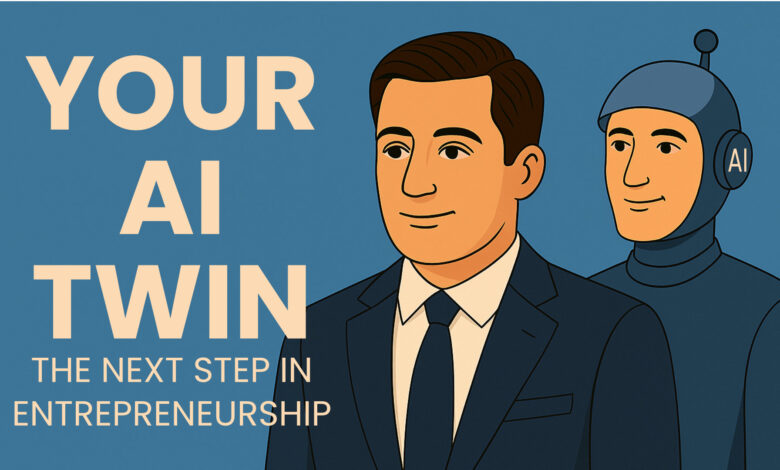
1. The Bandwidth Crisis: Why We Need a Clone
There’s a moment every founder hits where you think, I wish I could duplicate myself. For me, it wasn’t about ego—it was about bandwidth. I was running multiple brands, each with its own identity, and the demands never stopped. Time was tight, decisions were endless, and there was no one to soundboard with who truly understood how I thought.
That feeling of being stuck—not for lack of ideas, but for lack of time and trusted amplification—is what first made me curious about AI.
Before ChatGPT or any real AI integration, I did what most founders do: I hired people, delegated tasks, and tried to instill my thinking through training. But training takes time. Delegation only works when people can intuit not just what you do, but why you do it that way. And when you’re building something mission-driven, values-led, or creatively unique, that kind of intuition is hard to transfer. I had conversations with peers, too—some were in entrepreneurship, but often in totally different disciplines. Helpful, sure. But not close enough to reflect my kind of thinking.
2. Building My Strategic Second Self
The real shift came when AI tools, especially ChatGPT, got better—and more importantly, more malleable.
I started using it more consistently, not just for one-off tasks, but as a persistent companion. I’d talk to it like I would a team member. I’d explain my tone, my values, how I think about strategy, how I approach creative direction. It wasn’t about having it do the work for me. It was about having it learn from the work I was already doing.
Over time, something clicked. I realized: this is the closest I’ve come to cloning myself.
The simplest use case—email—is where the magic became obvious. With ChatGPT trained on my tone and phrasing, I could draft responses faster than I could think them. What used to take 10 minutes now took 90 seconds. And the beauty was, I wasn’t outsourcing the heart—I was just accelerating the execution. I became the editor instead of the writer. And that shift changed how I managed my time and mental energy.
But it wasn’t just about email. I started using AI to reflect and push back. For brainstorming, for organizing my thoughts, for helping me get out of idea ruts. I’d ask it to challenge assumptions, remix concepts from different domains, or map out the strategic implications of something I was considering. When you’re operating at a high pace, it’s easy to fall into reactive thinking. But with AI as a kind of “thought mirror,” I could slow down, sharpen, and build more intentionally.
Of course, there’s a line. I’m not one of those “AI will replace creators” people. Right now, AI can’t create. It curates. It remixes. It synthesizes. That’s powerful—but it’s not the same as original insight. And it never will be unless you teach it who you are first.
The mistake most people make is asking AI to solve something on its own. Like: “Give me 10 interview questions for a marketing role.” That’s shallow. But if I prompt it with: “Here’s what I value in a marketer. Now, help me write interview questions that surface those values,” the output is 10x more relevant. Why? Because it’s rooted in my thinking—not the internet’s average.
This isn’t about outsourcing intelligence. It’s about building a strategic second self. Not just a faster assistant, but a partner that understands your mind and can reflect it back to you under pressure.
I don’t trust AI to define strategy, set priorities, or create something from scratch. But I do trust it to help me cross-pollinate ideas from other industries, compress information, and make faster sense of things that would normally take hours. In that sense, it’s not a creator. It’s a clarifier. A mirror. A friction-reducer.
3. Training Your AI, Amplifying Your Thinking
You don’t need AI to replace anyone. You need it to replicate you. Your tone. Your instincts. Your logic tree. And once you’ve built that, you’ll wonder how you ever functioned without it.
The trick is in how you train it. You can’t just “plug and play.” You have to talk to it regularly. Use it daily. Give it feedback. Ask it to remember things. Test its accuracy. Teach it to reflect your operating principles, your voice, and even your emotional patterns. The more you engage with it, the closer it gets to being a true extension of how you think.
What excites me most is where this is all heading. As large language models evolve and fine-tuning becomes more accessible, we’ll soon be able to create persistent, deeply personalized AI agents that think and speak just like us. Not in a creepy way—but in a way that lets founders like me stay strategic without burning out on the daily flood of micro-decisions.
The future of leadership isn’t delegating everything. It’s being amplified—intelligently, consistently, and at scale.
With the right tools, you’re not just building a business. You’re building a second self.





